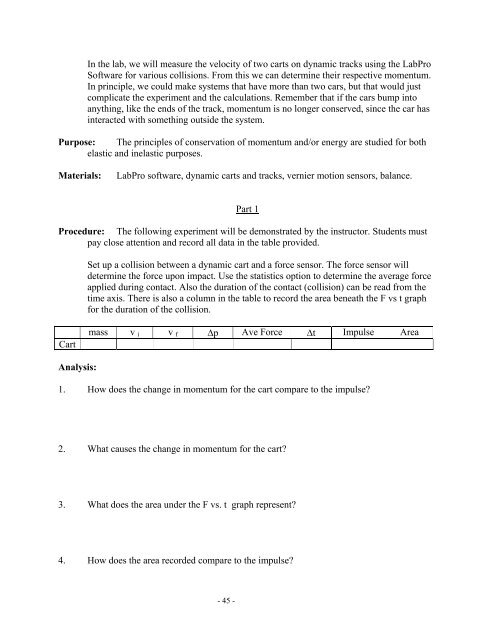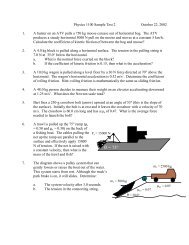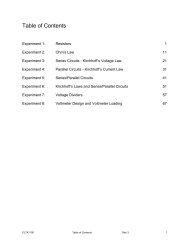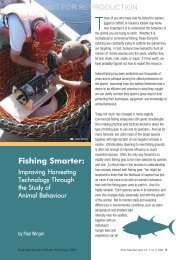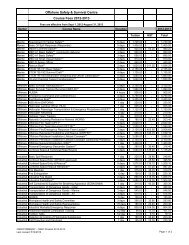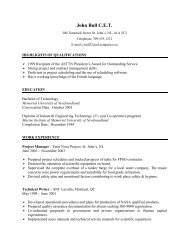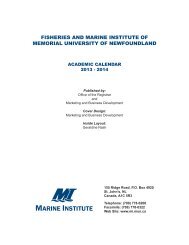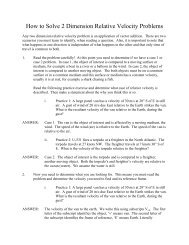You also want an ePaper? Increase the reach of your titles
YUMPU automatically turns print PDFs into web optimized ePapers that Google loves.
In the lab, we will measure the velocity of two carts on dynamic tracks using the <strong>Lab</strong>ProSoftware for various collisions. From this we can determine their respective momentum.In principle, we could make systems that have more than two cars, but that would justcomplicate the experiment and the calculations. Remember that if the cars bump intoanything, like the ends of the track, momentum is no longer conserved, since the car hasinteracted with something outside the system.Purpose: The principles of conservation of momentum and/or energy are studied for bothelastic and inelastic purposes.Materials:<strong>Lab</strong>Pro software, dynamic carts and tracks, vernier motion sensors, balance.Part 1Procedure: The following experiment will be demonstrated by the instructor. Students mustpay close attention and record all data in the table provided.Set up a collision between a dynamic cart and a force sensor. The force sensor willdetermine the force upon impact. Use the statistics option to determine the average forceapplied during contact. Also the duration of the contact (collision) can be read from thetime axis. There is also a column in the table to record the area beneath the F vs t graphfor the duration of the collision.Cartmass v i v f ∆p Ave Force ∆t Impulse AreaAnalysis:1. How does the change in momentum for the cart compare to the impulse?2. What causes the change in momentum for the cart?3. What does the area under the F vs. t graph represent?4. How does the area recorded compare to the impulse?- 45 -


